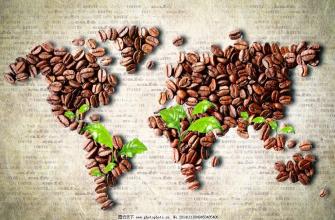Introduction to the taste of Costa Rican coffee beans with the best baking degree, time trend map and flavor description.
Introduction to the taste of Costa Rican coffee beans with the best baking degree, time trend map and flavor description.
Costa Rican coffee is full of particles, ideal acidity, The coffee industry in Costa Rica, originally controlled by the Costa Rican Coffee Industry Company (InstitutodelCaf é de Costae ICAFE), has been taken over by the official Coffee Committee (Oficinade Cafe). Those products considered to be of unqualified quality in exported coffee are colored with blue plant dyes and then returned to domestic sales of coffee consumed domestically (dyed blue or not dyed). (about 10% of total output) local per capita coffee consumption is twice that of Italy or the United States
This coffee producer accounts for 1/3 of global coffee consumption, and has a place in the global coffee market, although the natural disasters faced by Costa Rica are several times higher than in other regions, but its arable area is enough to make up for it.
There are many kinds of coffee here, but its industrial policy is large and cheap, so there is not much excellent coffee, but it is a good choice to mix other coffees.
One of the most famous is the mountain Costa Rican coffee, which tastes mellow and neutral, it can be boiled directly, or mixed with other kinds of coffee beans to form a comprehensive coffee is also a good choice.
All the coffee trees planted in Costa Rica are Arabica coffee trees. through improvement, the quality of coffee beans is better and more stable. in order to facilitate picking, coffee trees are kept at a height of about 2 meters through continuous pruning. The coffee that people eat is the taste of the seeds in the fruit that are brewed in water. After picking raw coffee beans, the seeds (that is, coffee beans) can be roasted by removing peel, pulp, seed film and sun exposure. Part of the process can be replaced by machines, and the speed of coffee production increases a lot. However, there is no machine to do coffee picking. We must use manual work, the most famous of which is mountain Costa Rican coffee, which tastes mellow and neutral, and can be boiled directly. Or mixed with other kinds of coffee beans into mixed coffee, is also a good choice.
Other kinds of Brazilian coffee, such as Rio and Parana, can be produced in large quantities because they do not require too much care. Although the taste is rough, it is a kind of high-quality and inexpensive coffee, which has its own standards because it is distributed all over the country and varies in quality (NO.2~NO.8 according to the number of sundries, NO.13~NO.19 according to the size of beans, and six grades according to taste). Almost all Arabica varieties are of good quality and stable in price. The most famous one is Costa Rica, which has been a necessity of blended coffee and is familiar to the public since ancient times.
Excellent Costa Rican coffee is called "extra hard beans". This kind of coffee can grow above 1500 meters above sea level. Altitude has always been a problem for coffee growers. The higher the altitude, the better the coffee beans, not only because the higher altitude can increase the acidity of the coffee beans and thus increase the flavor, but also because the night temperature at the higher altitude is lower, which can make the trees grow slowly, thus the flavor of the coffee beans is stronger. In addition, due to the sufficient rainfall caused by the drop at high altitude, it is very beneficial to the growth of coffee trees.

Important Notice :
前街咖啡 FrontStreet Coffee has moved to new addredd:
FrontStreet Coffee Address: 315,Donghua East Road,GuangZhou
Tel:020 38364473
- Prev

Rich sweetness of Starbucks' Colombian Rosa Coffee flavor description taste manor regional varieties
Starbucks Columbia Rosa Coffee flavors describe the taste of this rose summer coffee is rich in the characteristics of coffee in the Bockett region of Panama, such as lemon grass and jasmine, while it also has the unique nutty, apricot and honey flavors of El Zafir manor. This particularity makes the flavor of this rose summer very unique. He has a very high but mild acidity.
- Next

Introduction to the regional treatment method for the grinding scale of Panamanian coffee beans with moderate sour and bitterness
Panama Coffee is grown in the western part of the country, near Costa Rica and the Pacific Ocean. The Boquet district of Chiriqui province is the most famous for its coffee, and Vocan,Santa Clara is also famous. Other areas include David, Remacimeinto, Bugaba and Tole.
Related
- Detailed explanation of Jadeite planting Land in Panamanian Jadeite Manor introduction to the grading system of Jadeite competitive bidding, Red bid, Green bid and Rose Summer
- Story of Coffee planting in Brenka region of Costa Rica Stonehenge Manor anaerobic heavy honey treatment of flavor mouth
- What's on the barrel of Blue Mountain Coffee beans?
- Can American coffee also pull flowers? How to use hot American style to pull out a good-looking pattern?
- Can you make a cold extract with coffee beans? What is the right proportion for cold-extracted coffee formula?
- Indonesian PWN Gold Mandrine Coffee Origin Features Flavor How to Chong? Mandolin coffee is American.
- A brief introduction to the flavor characteristics of Brazilian yellow bourbon coffee beans
- What is the effect of different water quality on the flavor of cold-extracted coffee? What kind of water is best for brewing coffee?
- Why do you think of Rose Summer whenever you mention Panamanian coffee?
- Introduction to the characteristics of authentic blue mountain coffee bean producing areas? What is the CIB Coffee Authority in Jamaica?

